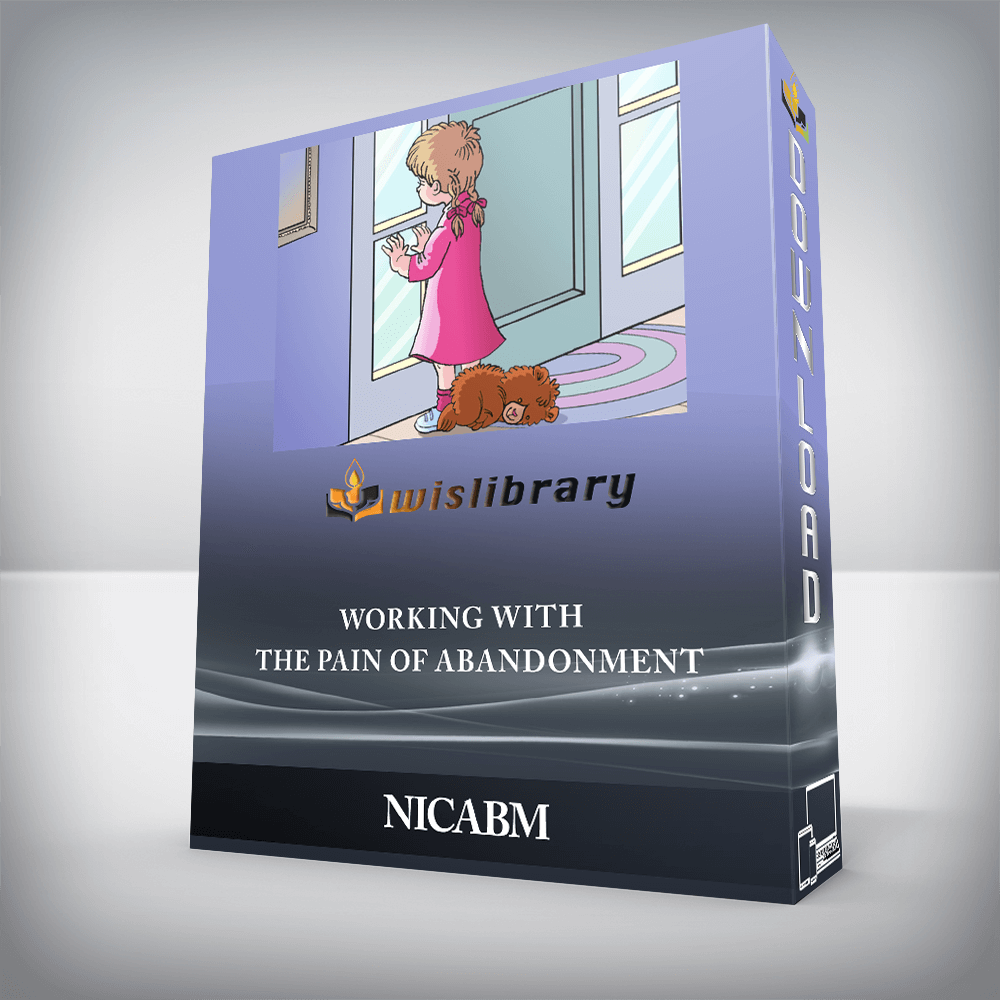NICABM – Working With The Pain Of AbandonmentWorking with Abandonment: 26 Top Experts Share the Latest Strategies to Help Clients HealBeing abandoned hurts. In the moment, it can feel like you can’t breathe and that life is about to end. And then comes the painful sensations that ripple through the body and fill you with paralyzing panic.When this happens to a client, they can become fearful of ever experiencing abandonment again. Problem is, they can then develop harmful coping strategies that not only create more pain, but put them at even greater risk of being rejected.So how do we work with the desperate behavior and hyper-reactivity that can make abandonment a self-fulfilling prophecy?We turned to the world’s 26 top experts to hear how they work with clients who have been abandoned. Here are the latest strategies that you can start using in your work today.Working with the Pain of AbandonmentHow to Work with Clients Who Are Hypersensitive to RejectionPeter Levine, PhD     Ron Siegel, PsyDJudson Brewer, MD, PhD     Melanie Greenberg, PhDThe specific neural pattern that may fuel a fear of abandonmentOne way to help clients shift out of a rejection-oriented mindsetHow to work with a client’s panic when being rejectedKey Strategies for Working with Abandonment and TraumaBessel van der Kolk, MD     Peter Levine, PhDKelly McGonigal, PhD     Resmaa Menakem, MSW, LICSW, SEPMelanie Greenberg, PhDHow PTSD can lead to powerful brain schemas that invite rejection from othersOne practice to help clients with panic disorder regulate their body when triggered by abandonmentHow trauma-informed interventions can neutralize reactivity to an experience of rejectionHow to Approach Shame That Drives a Fear of RejectionDan Siegel, MDHow the ruminating brain can lock clients into ambivalent relationships that invite shameHow to work with clients whose sense of defectiveness fuels a fear of abandonmentHow to Work with the Deep and Profound Pain of AbandonmentStephen Porges, PhD     Deb Dana, LCSWHow abandonment can leave a lasting imprint on a client (and what this means for treatment)Why a client may subconsciously sabotage offers to co-regulateHow to help a client who fears abandonment to better tolerate ruptures in a relationshipHow to Recognize Signs Your Client Has a History of AbandonmentPat Ogden, PhD     Bonnie Goldstein, PhD     Deb Dana, LCSWHow to recognize possible signs of early life abandonmentThe signs that can reveal the ways a client is managing a fear of abandonmentWays to Change Fearful Behavior That Sets a Client Up for Further AbandonmentPat Ogden, PhD     Melanie Greenberg, PhD     Ron Siegel, PsyDDonald Meichenbaum, PhD     Terry Real, MSW, LICSWTwo specific ways a client’s fear of abandonment can become a self-fulfilling prophecyHow to reframe a client’s neediness to make it an ally in their healingHow to help a client stay regulated when their partner rejects their needsHow to Help Clients Stop Sacrificing Their Boundaries to Avoid Being AbandonedJoan Borysenko, PhD     Kelly McGonigal, PhD     Ron Siegel, PsyDJudson Brewer, MD, PhD     Melanie Greenberg, PhD     Pat Ogden, PhDThe addiction model that leads a client to soften their boundaries (and how to change it)The painful reason why some clients will gamble away their principles in a relationshipTwo practical ways to help clients shore up their personal boundariesA 3-Step Strategy to Expand a Client’s Tolerance of RejectionSteven Hayes, PhD     Kelly McGonigal, PhDHow to help clients engage their fear of abandonment without getting overwhelmedHow to adjust your treatment of abandonment when the client dissociatesA compassionate strategy to help clients break a paralyzing fear of abandonmentHow to Treat A Fear of Abandonment Linked to BetrayalShelly Harrell, PhD     Richard Schwartz, PhD     Stan Tatkin, PsyD, MFTOne way to reduce the stigma and humiliation a client attaches to their experience of betrayalThe damaging way clients often approach decisions when they fear lossHere’s What You’ll Get:Everything is yours to keep forever in your professional libraryDownloadable videos so you can watch at your convenience, on any deviceAudio recordings you can download and listen to at home, in the car, at the gym or wherever you likeProfessionally-formatted transcripts of the sessions, to make review and action simpleThree downloadable bonus videos to help you work with a client’s pain of abandonmentStarting Today, This Program Can Change the Way You Practice. . . I feel so fortunate to have this access to brain power, experience and research synthesis . . .“When I listen to the experts talk openly about their experience, I feel so fortunate to have this access to brain power, experience and research synthesis on cutting edge issues! I go back to the videos to reinforce things that will assist my clients.â€Mary Logan, CounselorIpswich, MAI benefit, my practice benefits, and most important my clients benefit . . .“I live in Nova Scotia and have limited travel funds at the university at which I work. The series provided by NICABM gives me the rare opportunity to listen to the leaders in the field. As a result, I learn valuable information that would not otherwise be available to me. I benefit, my practice benefits, and most important my clients benefit from the knowledge and wisdom I gain from the series.â€David Mensink, PhD Counseling Psychology, PsychologistHalifax, Nova Scotia, Canada. . . some dare to go the extra journey to research and educate“These NICABM series keep me afloat, in touch, on track, well trained in my field, and more personally healthy. The best aspect, though, is that I feel validated and comforted knowing that some dare to go the extra journey to research and educate, so I can walk the path to health, and can share with others.â€Mary Corsello-Vilcheck, LCSWMidlothian, VACourse DirectorRuth Buczynski, PhDDr. Ruth Buczynski is a licensed psychologist and founder and president of The National Institute for the Clinical Application of Behavioral Medicine (NICABM). NICABM helps physicians, nurses, psychologists, social workers, and counselors – practitioners who have some of the most significant and life-changing missions on the planet – provide cutting-edge, research-based treatment strategies to their patients. For more than 35 years, NICABM has offered accredited training and professional development programs to thousands of practitioners worldwide. Why the Transcript Is Essential: Click the image to enlargeThe transcript makes it easy to go back and double check concepts, citations and names that are mentionedWe put in a table of contents to make it easy for you to find the exact part of the webinar you needHaving the concepts already written allows you to take notes on how you’re going to use the ideas rather than transcribing the ideasSome people simply learn better by reading than by listening or watchingYou will be able to print out and share techniques presented in the session with your patients“I really liked being able to follow along with the transcripts as I listened…it was nice not to feel like I had to take notes. I really feel like I remember more when I both hear and see at the same time.â€Mary Ellen McNaughton, Masters in Counseling, Psychology CounselorKelowna, British Colombia, CanadaThere are no reviews yet.Add a Review Cancel replyYou must be logged in to post a review.
NICABM – Working With The Pain Of Abandonment
₹4,482.00







